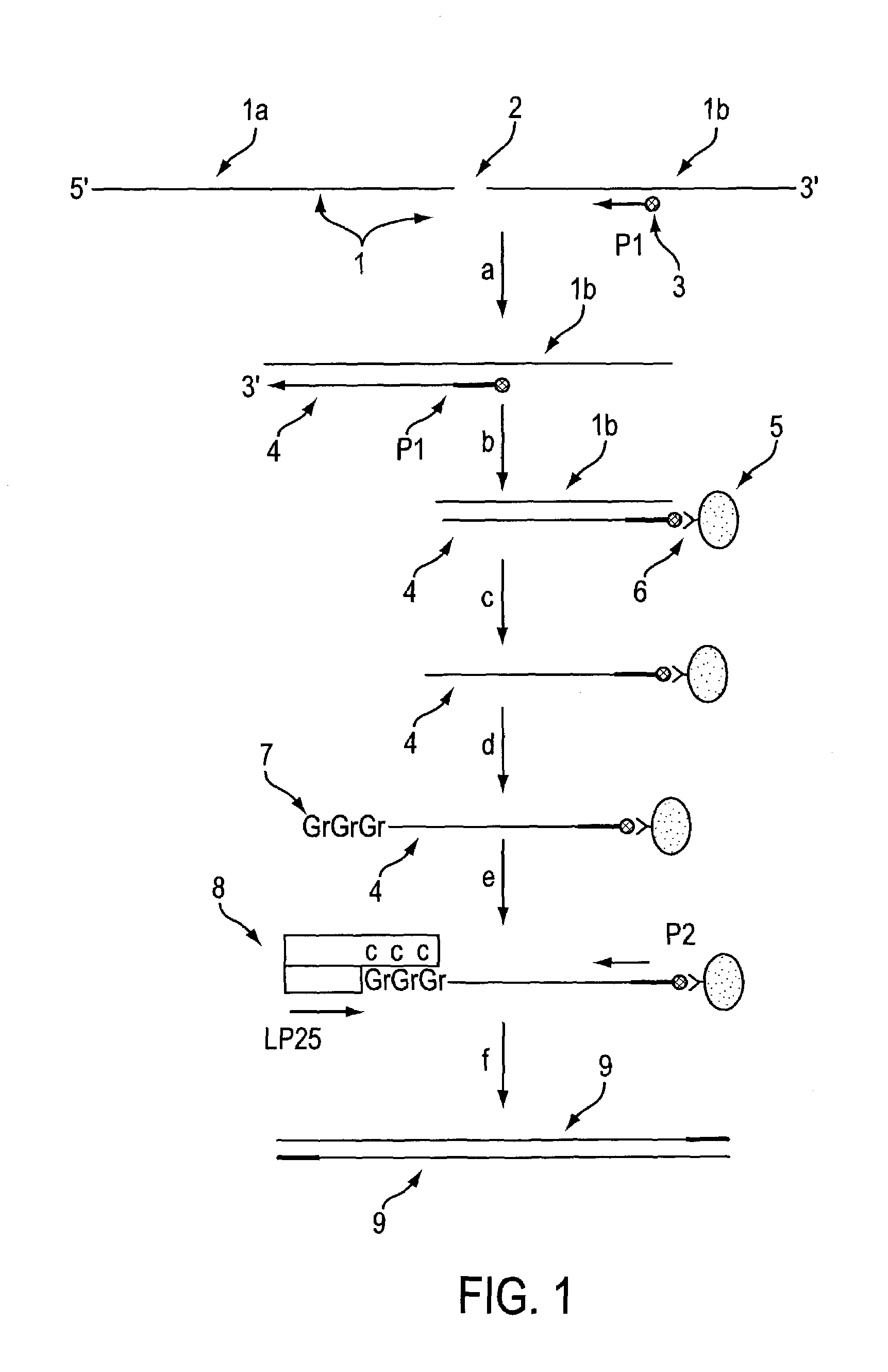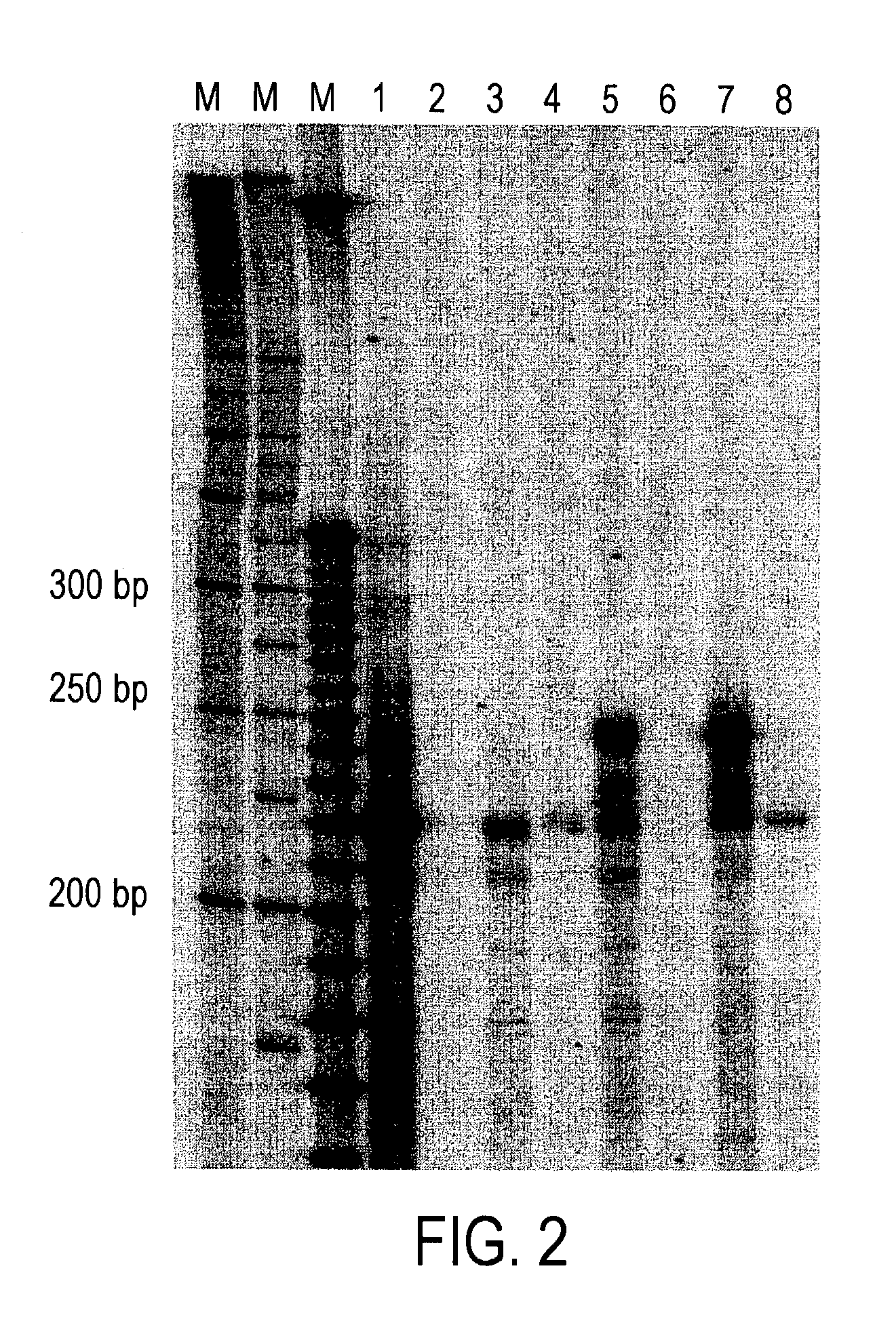Method for identifying accessible binding sites on RNA
a binding site and accessible technology, applied in the field of identifying accessible binding sites on rna, can solve the problems of insufficient screening of sites and rapid throughput of site screening, and achieve the effect of improving the quality of site identification
- Summary
- Abstract
- Description
- Claims
- Application Information
AI Technical Summary
Benefits of technology
Problems solved by technology
Method used
Image
Examples
example 1
[0042]This an example of site mapping using AIB1 mRNA (Anzick et al., Science 277:965–967 (1997), GenBank accession number AFO12108). In the sequence listings, all linkages are phosphodiester linkages unless otherwise stated.
[0043]The nucleotide sequences listed below were prepared using standard phosphoramidite synthesis chemistry on a commercial DNA / RNA synthesizer.
Random ODN Libraries
[0044]Semi-random oligonucleotide libraries consisting of two pools of oligonucleotides of the following composition:
[0045]
Pool 15′ N*N*N*N*N* NNN AGN NNN N*N*N*N*N* 3′Pool 25′ N*N*N*N*N* NNN ACN NNN N*N*N*N*N* 3′
[0046]The N*'s represent 2′-methoxyribonucleotide moieties A, G, C or T in random sequence. The N's represent 2′-deoxyribonucleotide moieties A, G, C or T in random sequence. The fixed 2′-deoxyribonucleotides A and C or G in the center of the ODN's were chosen to direct these pools to potential hammerhead ribozyme cleavage sites. For instance, pool 1 would pair with sequences containing a CU...
example 2
[0080]This is an example of site mapping using the mRNA encoding murine DNA methyltransferase (Mtase). Three potential sites for testing ODN accessibility were chosen based upon the criteria that each ODN spanned a potential hammerhead ribozyme cleavage site (NUH, where N=A, C, G or U and H=A, C or U) and each of these sites had a different predicted secondary structure based upon the mFOLD of Michael Zuker. The three antisense ODNs (AS351, AS398 and AS498) were all directed to potential binding sites downstream of the AUG translational initiation codon.
[0081]The nucleotide sequences listed below were prepared using standard phosphoramidite synthesis chemistry on a commercial DNA / RNA synthesizer. All linkages were phosphodiester.
Defined ODNs
[0082]
Sense Controld (GCAAACAGAAATAAAAAGCCA)Seq ID 23Scrambled Controld (TCGTGCCCACGGGTCATGTTGT)Seq ID 24AS351d (CCGTTCTCCAAGGACAAATCCTTATT)Seq ID 25AS398d (TCCCGTTGGCGGGACAACCGTTG)Seq ID 26AS498d (GGGTGTCACTGTCCGACTTGCT)Seq ID 27
Primers for MTas...
PUM
| Property | Measurement | Unit |
|---|---|---|
| pH | aaaaa | aaaaa |
| pH | aaaaa | aaaaa |
| volume | aaaaa | aaaaa |
Abstract
Description
Claims
Application Information
 Login to View More
Login to View More - R&D
- Intellectual Property
- Life Sciences
- Materials
- Tech Scout
- Unparalleled Data Quality
- Higher Quality Content
- 60% Fewer Hallucinations
Browse by: Latest US Patents, China's latest patents, Technical Efficacy Thesaurus, Application Domain, Technology Topic, Popular Technical Reports.
© 2025 PatSnap. All rights reserved.Legal|Privacy policy|Modern Slavery Act Transparency Statement|Sitemap|About US| Contact US: help@patsnap.com


